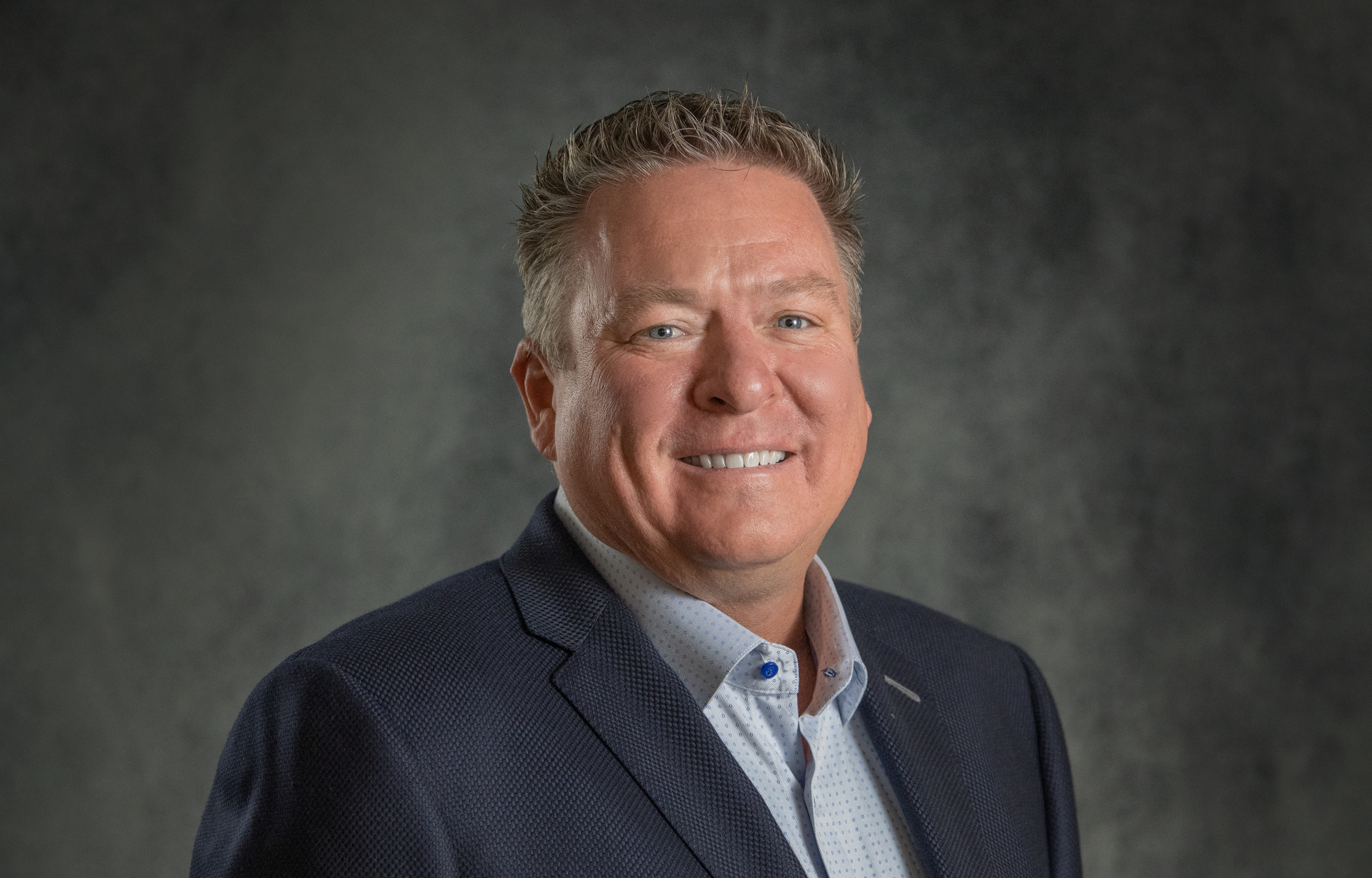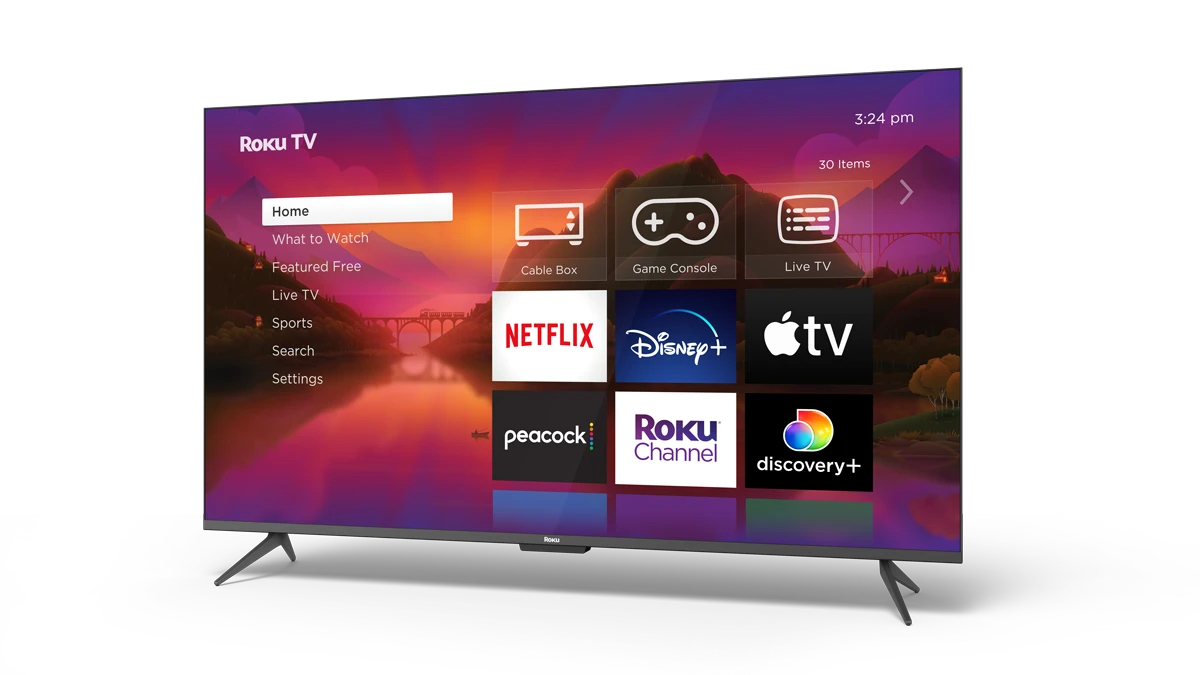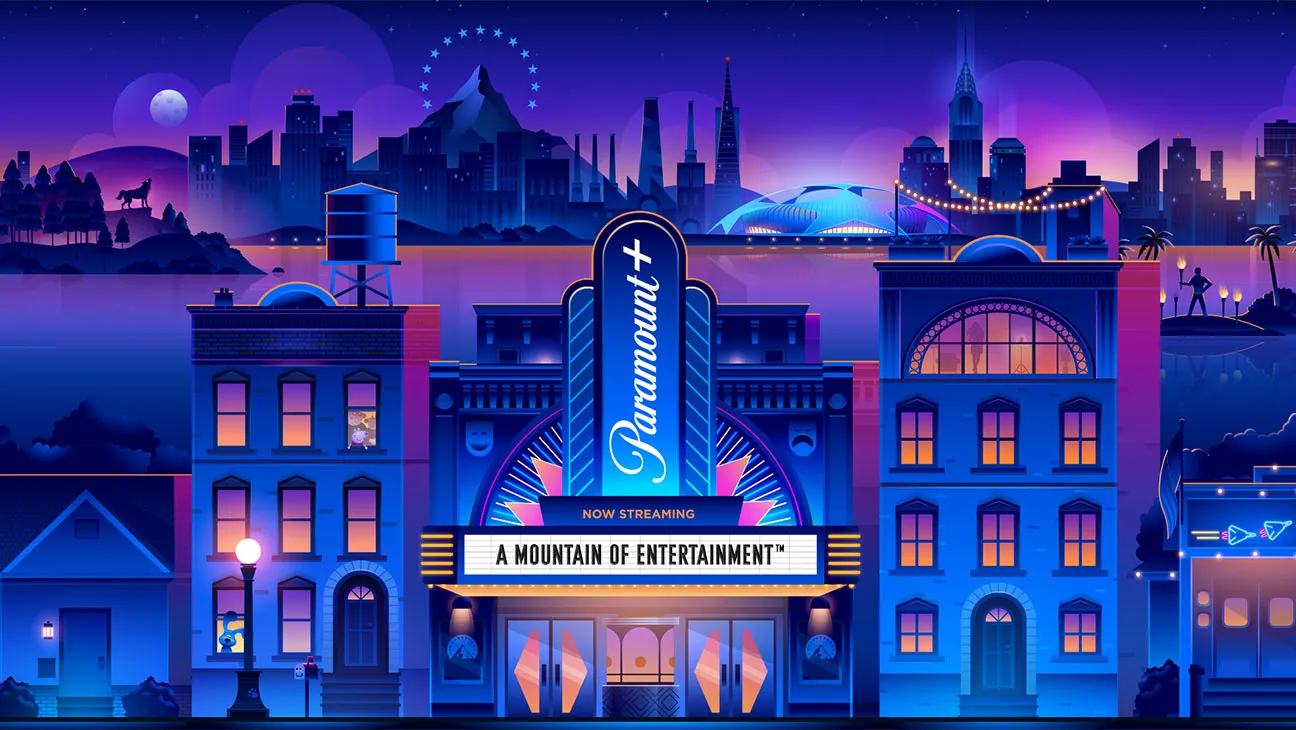
You know right away that you're talking to a serious gadget aficionado when he tells you that during the DVD era of the aughts, his living room was powered by Crestron pro AV equipment.
But even Chris Larson, the man who led TCL's invasion of the U.S. smart TV market in the middle part of the last decade, and who is now in charge of Roku's global TV push as VP of retail strategy, has his technological limitations.
"Every time I wanted to add a new piece of equipment to my AV system, I'd have to have that Crestron guy come back out and program it in for me," he told Next TV over Zoom on a hot late-August morning from his home in Orange County, Calif.
Perhaps it was frustrating consumer experiences like this one that forged Larson into the captain of consumer electronics industry he is today, foisting software and hardware that is easier for laymen to use and cheaper for manufacturing partners to build.
Whatever forged this dude, he has a unique perspective and insight on what the global living room of the future will look like ... and how it will be supplied. It was one interesting talk. Here's a transcript of our half-hour discussion:

Daniel Frankel: So I don’t know if you recall, but we’ve intersected before. You were on the Next TV “Watch List” back in 2020. Boy, your life must have changed. Could you even go outside for a cup of coffee in Orange County without being mobbed?
Chris Larson: Well, the paparazzi did get overwhelming.
Daniel: So you’ve been there from the beginning, Chris. You were the North American honcho at TCL in 2017 when it partnered with Roku to take over the continent.
Chris: It was August of 2014, that was the first step for Roku TVs. Both TCL and Hisense launched on that day in August of 2014.
Daniel: What was the “secret sauce” that made those partnerships work?
Chris: It was a perfect marriage. The strengths of TCL and Hisense were that they were really good at hardware, but really not very good at software. And Roku was really good at software, and didn't have as much experience in hardware. So they were really perfect matches. Since then, both TCL and Hisense have added a lot of software capabilities. And at the same time, Roku has added an awful lot of hardware capabilities. I don't think it's quite as Yin and Yang as it as it was in 2014. I think there's a lot of common strengths across both the hardware manufacturers and us as an OEM supporter.
Daniel: So it’s been about six months since Roku’s branded TVs hit retail shelves. How are sales going?
Chris: We're really happy with the way the business has performed. Our momentum grows, day after day, week, after week, month after month. So you know, we're growing about the rate we expected. You talk about separating our OEM program from our Roku branded. We don't quite look at them that separated. We think they're very complimentary. And a lot of the initiatives for Roku branded are designed to kind of lift the tide for all boats in that Roku TV harbor. Some of the innovation we're developing around the manufacturability, the cost of the platform, some of the tuning that we're able to do, some of the optimization between hardware and software … Those are things that will benefit our Roku TV program, mid in long term as well.
Daniel: You’ve answered this before, but I’ll ask again: What does having you’re own branded TVs do for Roku?
Chris: As we kind of outlined for you back in December, we actually developed the reference design for these TVs. We create the recipe that our manufacturing partners execute against. And again, by having deeper relationships with the component manufacturers, whether that be the Open Cell LCD guys, whether that be the SOC [system on a chip] guys, the memory, how those things are managed on a main board … Those are all things that we can make some significant inroads in now that we have those direct relationships. We don't want to shift from an OEM model to a first-party or a Roku-branded model. We want that to be incremental, accretive, you know. The belief is a that all TV will be streamed. And so assuming that that means all TVs are going to have to have an OS. And it’s just not practical to maintain the dozens of operating systems that exist today in the TV space, particularly when you look at the consolidation that has to happen on the content level. So there has to be consolidation among the OS [providers], which means we just have to get bigger and bigger. You know, if you look at what Microsoft's done with Windows, while they have their own first-party devices, they license out the Windows OS to everything from a cheap entry-level computers up to super-premium desktop editing and gaming machines. So there's room for all different levels and consumer choices. We're gonna design Roku branded TVs for how we see the ideal unadulterated Roku experience unfolding. But some of our manufacturing partners may want to go super premium. If you think of an OLED that we're not currently supporting, but we do have a reference design. So our OEM partners can take that premium position, while others might want to take a more entry-level position and not put the kind of memory or the kind of functionality that we might put in there, whether it be a Bluetooth module or a multi-speaker audio system, things that add true BOM [bills of materials] costs, but we believe also add a better consumer experience. So that'll be no different than the rest of the TV business where the customer just wants choices, and we shouldn't force everybody into into the same choice.
Daniel: There’s a lot to unpack there. I’m going to pull out the part about OS consolidation. I know your CEO, Anthony Wood, has said TVOS will consolidate into just a handful of major suppliers over the coming years.
Chris: Yeah, I think the OS has become much more than just simply adding apps to a TV, which is what we once thought it was. When you think of the intersections with even a single content provider, like a Paramount Plus, for example, where they have an app on our platform, like every other content provider, but we also integrate their content into many different places within many different places within the Roku Channel. How do we get people to that content? It's not as simple as just adding an app to the TV to provide that great customer experience. So being able to connect to our advertisers, being able to connect to the different functions the consumer would want, things like shoppable ads, are not easy to do. Roku spends roughly a billion dollars a year on research and development to do all these things. And it's taken us 15 years to get here. For someone to say I'm going to invest $200 million dollars and and catch that in the next six months is, quite frankly, kind of kind of a lot of bravado. If it could be done, you'd have to think that we have among the stupidest people in the industry on our books. And I don't think we do. We have the best the industry has to offer, both on the hardware side and the software side.

Daniel: You say this as newcomers like Xperi/TiVo and Comcast/Xumo run headlong into the global TVOS market.
Chris: Frankly, we're the only OS purpose-built for TV. So even if you took Android, which is a great software, but it's made for a mobile device, so it's made to have access to more memory access to more clock cycles … It's engineered in a different way than Roku OS. And the TV business is a very cost-sensitive business. So if I had to put an extra, you know, $4 worth of memory in there, that can be the difference of a $10 retail price difference. And with TVs, you know, you've been at this long enough to know that these are very price-sensitive. Ten dollars can be the life the difference between success and failure in a small screen size.
Daniel: You mentioned the barrier to entry prospective TVOS providers face. But how does a company like Roku, which has specialized in software and HDMI streaming pucks, dongles and sticks to date, just simply start up a branded TV business?
Chris: Yeah, without, you know, ripping all the curtains off of the House of Oz, there's a handful of panel factories in the world. There’s a handful of SOC suppliers. And frankly, there's only two handful of factories total. So most of the brands are manufactured by one of these factories. We do business with 13 of the major factories around the world that build Roku TVs for our OEM partners. Most brands are manufactured by a third party. So there's no reason we can't be that third party we've been. We've been working in that business since 2013. And understanding how the factory process works in designing those reference boards, and spinning out those boards, and maintaining the software at the same time ... So our experience actually goes back to 2013. With product development, the only difference is the sticker that goes on the front, and what choices we make when when developing the product. So you know, people buy a solution to their problems. So if you look at what Roku is able to do with a very attainable BOM cost device, like TCL 6 Series or a Roku Plus Series, those are just amazing devices for the BOM cost. Because we're able to do such unique things with them in the software space, that we really don't have to put the kind of hardware costs in that some of our competitors would have to. And we also have the experts on staff that know how to manage picture quality and manage audio quality. So where most OEM brands have to rely on the SOC provider to do that, Roku is actually in the catbird seat — we’re able to optimize the BOM on all components of the television.
Daniel: So you’re able to drive down the cost by getting more closely involved in the manufacturing process? I know, I'm super good at Captain Obvious questions.
Chris: Yeah, so a real easy example is the timing connector, the T-con board. That’s in just about all the TVs. Since the beginning of LCD, everybody's used the same timing connector, which is basically the controller in between the mainboard and the Open Cell panel. And it's easy for a manufacturer because if they want to buy a panel from BOE, and a panel from CSOT, or a panel from HKC -- they can pit those three factories against each other to buy the same 65-inch panel. And they all have the same input. So from a convenience of assembly [perspective] and convenience of the supply chain, it gives them a lot of negotiating power, because these panels are interchangeable. But what if we could take out that T-con board and run that same functionality on an SOC that's capable of it. So now we eliminate this extra board, we eliminate the cables going in and out of that. That allows us to save some cost, a couple dollars we'll call it. But it also means that manufacturability is much simpler, because now you just have one cable instead of four cable on each end. And you eliminate those connectors, which tend to be the most problematic part of electronics. So we're making a TV that has the same functionality. And by partnering with the panel people and saying, ‘Hey, look, Roku is half of the U.S. volume in the TV space. So you make half your panels for the U.S. market in this way,' we can save costs and we can increase reliability. And we can make a TV that the customer appreciates just as well, and one that lasts a little longer. So I think that's the kind of innovation that we're really looking for. Because if I'm a broad-market TV producer, we'll say I'm a TCL, I want to make as many common components as possible to push my business forward, because I know I have to support multiple operating systems, I know I have to support multiple frame rates, I know I have to support multiple cosmetics. Because what Americans like versus what Europe likes versus what Asia likes aren't all the same. So all of those compromises mean the most similar components, and each step is the best for them. For us, it's not. It's rethinking from the ground up. Our TV could be produced now at scale using what we know today. So a lot less is being bound by the legacy of TV design.
Daniel: So, it’s a statement that Roku believes its engineering is better?
Chris: It’s more about self-interest than bragging. You know, a TCL engineer could figure out how to eliminate a T-con just as easily as we could. It's just not in their best interest to do that. And that's just on the product side. On the marketing side, or how we speak to consumers, Roku branded also has significant advantages. And I can tell you from sitting in a prior chair where I wanted my brand to come out forward. I sold it as a TV including Roku, which means I just didn't have the kind of real estate to offer Roku to tell the full story. With Roku branded, we really have that ability to tell the full Roku story. And again, we believe that once the customer understands what these devices are capable of, what kind of delight we can add to their lives. Whether they buy our branded product or they decide to buy a more premium tech stack on the display side, or they want to save some money and their budget pushes them into something without quite all the all the bells and whistles, we're fine with any three of those.
Daniel: Like Amazon with its branded TVs, Roku has said it wants to expand the scope of what consumers think the TV is capable of. How do you see that happening?
Chris: I think we just started dipping our toe in the water with that. We can show your cameras on your TV, or your doorbell on your TV. You can control your lights from your TV. But in the future, AI and some of the things that machine learning can can bring to the party, along with having kind of this app store … that’s exciting. There may be a day that on Halloween, you tell your home you want the Halloween solution, and your TV will be Halloween themed, your home lighting will be Halloween themed, your doorbell ring will be a scary song … you can think of all the things that we can do once we apply this software within your home. So yeah, we really believe that in the in the future, regular people should be able to use a smart home.
Daniel: The branded TV thing can’t be easy on your OEM relationships.
Chris: I won't kid you, change is always scary for both Roku and our OEM partners. But I think now that they've had a little taste for last six months of how we're doing and what we're doing and why, we really had a great revival in relationships. We just had the TCL chairman in our office last week, and we've got their CTO in there this week. So the relationships are strong, I believe. And I think as we start delivering things to them that make their business easier, better and more profitable, they'll only grow in appreciation for what we're trying to achieve.







